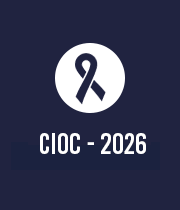Title : Integrative prognostic assessment of PLR, NLR, PMR, LMR, and SII with clinicopathological parameters in oral squamous cell carcinoma
Abstract:
Background:
Age and Gender: Oral cancer is predominantly observed in men over 50 years old. Younger patients rarely develop this type of cancer, although risk factors like alcohol and tobacco use might accelerate its onset. T-stage in the AJCC8 tumour node metastasis staging system is critical for determining the extent of tumour growth and its invasion into nearby tissues. A key factor influencing T classification is the DOI, which provides insight into how deeply the tumour has penetrated the surrounding tissue. Inflammation and Nutritional Indices: These ratios of these indices reflect systemic inflammation and immune status, and their elevated levels shown poor prognosis in various cancers.
Aims and objectives: To find the significant predictors for prognosis of OSCC using demographic data, clinical variables, pathological characteristics, as well as nutritional and inflammatory markers, as applicable.
Methodology:
Sample size calculation: 767 patients. The patients who have been treated at KMC, Manipal from 2018 to 2023 will be included in this study, as per the below mentioned eligibility criteria. (Tentatively, as per the medical records)
Inclusion criteria
- Biopsy proven cancers involving oral cavity (ICD 10- C02, C03, C04, C05, C06)
- Any T(T1-4) and any N(N1-3), with M0 (non-metastatic)
- Undergone curative intent treatment at Kasturba Hospital, Manipal
Exclusion criteria
- Multiple primary cancers
- Recurrent cancers
- Incomplete medical records
Specifically:
- LMR = absolute lymphocyte count ÷ absolute monocyte count
- PLR = absolute platelet count ÷ absolute lymphocyte count
- NLR = absolute neutrophil count ÷ absolute lymphocyte count
- PMR = absolute platelet count ÷ absolute monocyte count
- SII = Neutrophils X Lymphocytes/Platelets
Departments involved: This study will be carried out by the department of Otorhinolaryngology and Head and Neck Surgery, in collaboration with the departments of Surgical Oncology, Radiotherapy of Kasturba Medical College and Hospital, Manipal, and Oral and Maxillofacial Surgery of Manipal College of Dental Sciences, Manipal.
Study period: 2 months from the date of IEC approval.
Data collection: At the point of diagnosis, pertinent clinicopathological characteristics and haematological information will be gathered before the commencement of any clinical procedures. These include demographic details such as age, gender, disease duration, tumour size, DOI, and pathological grade of the primary lesion.
In addition, blood-based prognostic factors will be incorporated into the analysis, including lymphocytes, monocytes, neutrophils, platelets and total leukocyte count. The following ratios will be calculated based on these blood indices.
Results: Univariate logistic regression was conducted to identify significant predictors. At a 0.2 level of significance, Age, T-Stage, DOI, NLR, PMR, PLR, and SII are the significant predictors of N Stage. Multivariate logistic regression was conducted using the significant predictors obtained from the univariate analysis. In the multivariate analysis, several predictors showed significant associations with nodal status (N+ vs. reference N–) at a significance level of p < 0.20. Depth of invasion (DOI) category 3 (vs. category 1) was the strongest predictor, with over fourfold increased odds of N+ (AOR = 4.417, 95% CI: 1.956–9.972, p < 0.001). DOI category 2 (vs. category 1) was associated with 70% higher odds of having N+ compared to N– (AOR = 1.705, 95% CI: 0.9242–3.147, p = 0.088). T-stage 2 (vs. T-stage 1) was significantly associated with more than twice the odds of N+ (AOR = 2.18, 95% CI: 1.0217– 4.651, p = 0.044). Age (AOR = 0.988, 95% CI: 0.971–1.004, p = 0.147), suggested that each one-year increase in age was associated with a 1.2% reduction in the odds of being N+, whereas each unit increase in NLR was associated with a 22.3% increase in the odds (AOR =1.223, 95% CI: 0.9119–1.641, p = 0.179).
Conclusion: A multiparametric prognostic model was developed using clinicopathological features and pretreatment blood-based inflammation- and nutrition-related indicators, demonstrating superior performance over traditional TNM staging in predicting N-status among preoperative OSCC patients. Significant predictors included T-stage, DOI, NLR, PLR, PMR, and SII. These findings highlight the prognostic value of immune-inflammatory markers and tumour characteristics. With further validation in multicentre, large-scale cohorts, this low-cost and accessible model could assist clinicians in patient counselling and prognostication.



